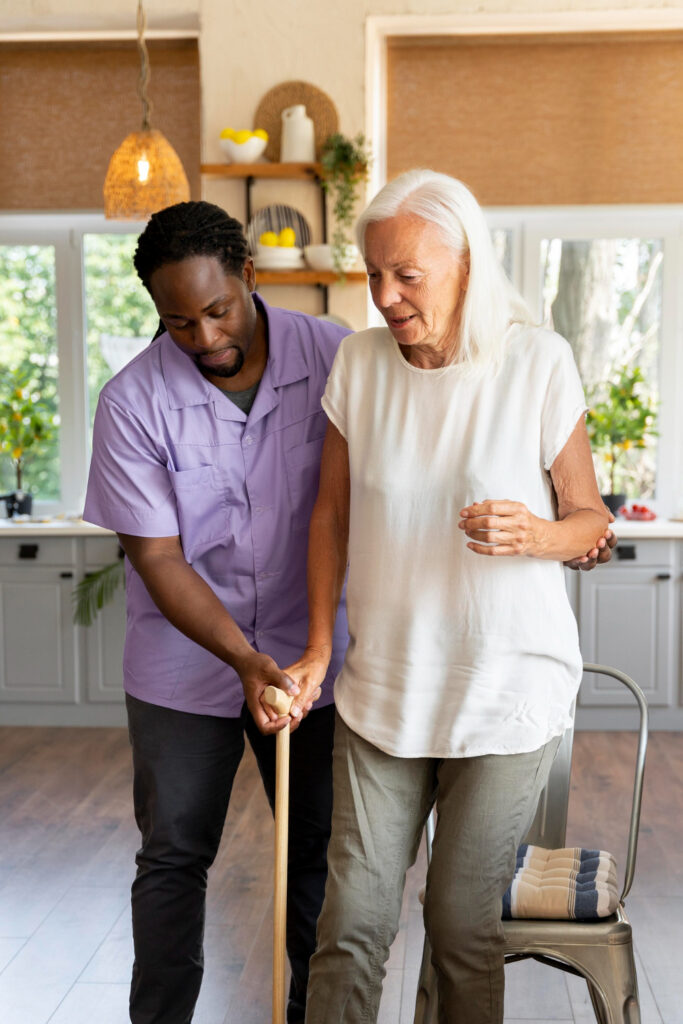Brightening a Life: How Volunteering with Seniors Builds Human Connection


There’s something quietly powerful about spending time with someone who’s seen a century pass. In a world rushing toward what’s next, sitting beside an elderly person—listening to stories, offering a hand, or simply sharing a moment of silence—can feel like a rare kind of stillness. For many seniors living in nursing homes, these small connections are more than comforting; they are essential to their well-being.
Loneliness remains one of the most overlooked forms of hardship among the elderly. While staff in care facilities provide essential support, it’s often volunteers who bring something just as important: warmth, presence, and a sense of being remembered. You don’t need hours of free time or formal training. You just need the willingness to show up.
Table of Contents
Why Human Connection Matters in Senior Care
Aging often brings a narrowing of social circles—friends pass away, family moves, and health issues make it harder to stay connected. For seniors in nursing homes, this isolation can become routine. A visit from a volunteer, even a brief one, can break that routine in the best possible way.
Social interaction improves mental and physical health in older adults. It’s linked to lower rates of depression, better memory retention, and even longer life. But beyond the research, there’s a quiet truth: people thrive when they feel seen and valued.
When you sit beside a resident and ask about their day—or better yet, their life—you’re not just passing time. You’re offering dignity. You’re reminding someone that their stories matter.
Simple Ways to Make a Meaningful Impact
You don’t need a background in elder care to make a difference. Some of the most powerful contributions come from simple gestures: reading a favorite book aloud, playing cards, sharing music, or just asking how someone is really doing.
Even short, informal visits can lift spirits. Many residents miss the kinds of conversations that take place in living rooms or kitchens—everyday moments that make life feel richer and more fulfilling. When volunteers bring those interactions into nursing homes, they restore something deeply human.
Small acts count. A handmade card. A shared memory. A quiet walk down the hallway. What matters isn’t what you bring—it’s that you came.
When Kindness Reveals Something More
Spending time with seniors builds trust. Over time, a resident might open up in ways they haven’t with staff, or their behavior may quietly suggest something deeper. Volunteers are often the first to notice when someone becomes unusually quiet, withdrawn, or uneasy. A subtle bruise, a change in mood, or a story that doesn’t sit right can raise gentle questions.
You don’t have to assume the worst. However, being present means being able to observe and act when something feels off. It helps to know what to do if you suspect nursing home abuse. Compassion sometimes means offering more than comfort—it means being willing to speak up.
Volunteers aren’t there to investigate. But they can be quiet advocates, and sometimes that presence is exactly what a resident needs most.
The Science Behind Social Connection
The emotional warmth volunteers bring to nursing home residents isn’t just comforting—it’s backed by science. Social engagement plays a crucial role in senior health, influencing various aspects of health, including memory and heart function. According to the National Institute on Aging, chronic loneliness raises the risk of depression, cognitive decline, and heart disease.
Even modest, consistent interaction can help. Just a handful of meaningful conversations each week can lift a resident’s mood, strengthen memory, and ease stress. For those without regular visitors, a volunteer often becomes a vital connection to the world beyond the facility.
There’s a reason many facilities welcome volunteer support: they know that kindness often goes further than medicine.
Finding Your Way to Give
There’s no single way to volunteer with seniors. Some people feel at ease swapping stories, others prefer helping behind the scenes, or offering a quiet presence. What matters is consistency, care, and respect.
If you’re unsure where to begin, explore what feels most natural. Whether it’s scheduling weekly visits or finding creative ways to get involved, there are many paths to take. These innovative ways to uplift your community can help spark ideas that match your time, energy, and compassion.
The smallest gestures can brighten a day. And over time, those bright moments become part of a life well-lived.
Conclusion
Volunteering with seniors isn’t about grand gestures—it’s about presence. A few minutes of listening, a shared memory, a quiet act of kindness can ripple through someone’s day in ways you may never fully see. For residents in nursing homes, those moments remind them they’re not forgotten. For volunteers, they offer something just as lasting: connection, perspective, and a sense of purpose.
The more we show up for each other—especially for those who often go unseen—the more compassionate our communities become. And sometimes, just being there is exactly what someone needs.

